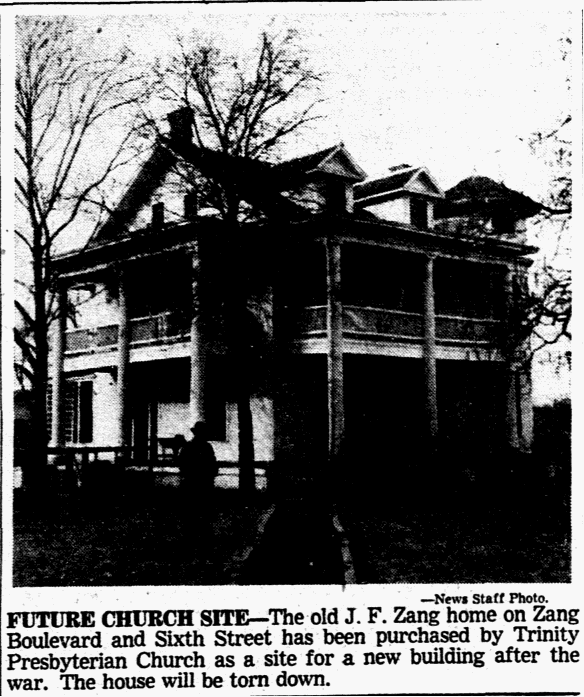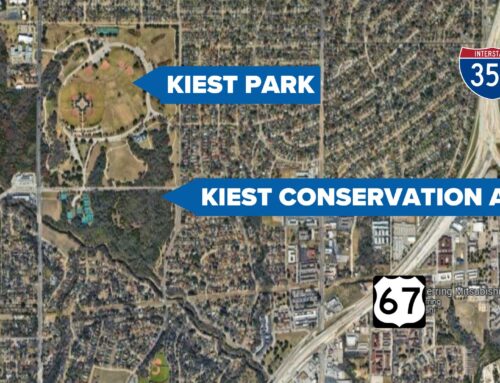A developer is proposing to tear down a 64-year-old church building at Zang and Sixth to build apartments. It’s not the first old building to be torn down on that site, nor the first apartments there.
Trinity Presbyterian Church bought the home of J.F. Zang in December 1943. Zang built the home in 1906 on the highest point in his “Crystal Hill Addition.” It was a two-and-a-half story white colonial with a view of Downtown. At the time the church bought it, the home had been used as an apartment building for 25 years.
The church was founded in Oak Cliff in 1890 and had lost its Tenth Street building during the depression. They had been meeting at Greiner middle school before they bought the Zang house.
The congregation then held church in the Zang house for seven years before its new building was constructed. A newspaper headline from 1944 announces that the church would have one step.
“I have found during my ministry so many people unable to climb the flights of stairs to most church buildings that it is our purpose to erect a building just one step above the ground,” the newspaper quoted the church’s pastor, Jasper Manton.
Built in the Spanish modern style, the design of this church was a break from the tradition of grand staircases and pillars that most big churches featured at the time. It cost $100,000 to build and opened in 1950.
In 1957, Trinity Presbyterian had the second-largest congregation in Dallas.
But changing demographics caused membership to dwindle, and by the 2000s, most of the church’s members were seniors.
The church was known for its generosity, offering a food pantry, after-school tutoring and transitional housing for the homeless.
From a 2008 Dallas Morning News story about the church’s closing:
“Trinity has reached out to Hispanics – hosting a small Spanish-language congregation called Iglesia Presbiteriana Emmanuel, as well as English language classes – efforts at dual-language worship flopped.”
In the end, expenses outweighed weekly offerings, and members voted to close it.
Now developer Randy Primrose is buying the building from Grace Presbytery, with plans to build as many as 70 apartments on the site.






